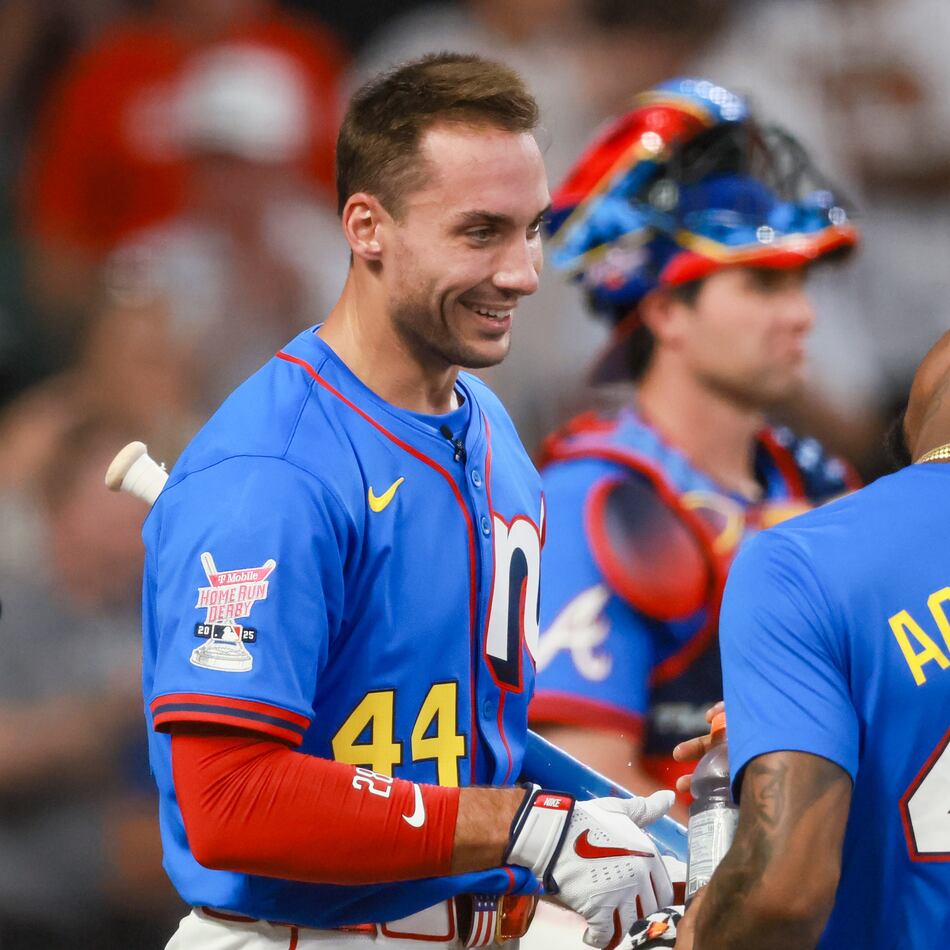With the wrecking ball knocking at the door, Georgia Tech plays its final basketball game inside Alexander Memorial Coliseum Sunday afternoon.
There is nothing special about the home team: Tech is 4-11 in the ACC, and the villagers are in revolt. And the visitor — Miami — is hardly a classic conference foe, being the Cohiba in a Marlboro culture.
It figures to be a meek and most unfitting goodbye for a structure that, in its best days, was a howling, stuffed-to-the-rafters madhouse. It was, says TV’s Brad Nessler, a college setting that “stood up against the best; I got chill bumps when it really got good.”
It was Nessler who, when working the Tech radio broadcast alongside the late Al Ciraldo, nicknamed the Coliseum the Thrillerdome during a string of late, loud victories in 1984. The thrill has been largely absent this season in advance of a $45 million renovation that will result in a new name at the entrance — the McCamish Pavilion — and a sweeping new look when the place is reopened for the 2012-13 season.
So complete are the changes that, while the roof and the site remain the same, the arena likely will lose its place in line as the second-oldest building in the ACC. Opened in 1956, Alexander Memorial was behind only Duke’s Cameron Indoor Stadium in seniority.
Last days ‘beyond sad’
Nessler was calling Tech basketball games back in the mid-1980s, an era of great promise when the Yellow Jackets first gained credibility in the ACC behind then-coach Bobby Cremins.
Along with Cremins came a succession of high pedigree players like Mark Price, John Salley, Dennis Scott and Kenny Anderson who ushered the program into the 1990s and accounted for three ACC titles and nine straight NCAA tournament bids. Tickets to games became scarcer on campus than a liberal arts major.
As he entered the building last month to do one final broadcast, Tech vs. Florida State, from his former haunt, Nessler looked around at the unoccupied seats, noted the silence around him and said to himself, “Oh, man, this doesn’t look good at all.
“This is not the way I wanted it to go out either. I wanted one more overtime, one more great finish.” The Seminoles beat Tech by nine that night, the Yellow Jackets shooting just 30 percent from the field.
“It’s beyond sad,” Scott said of the last days of Alexander Memorial.
Athletic Director Dan Radakovich refused to say anything about how quietly the old place is going out — “I’m not going to say that until after the Miami game,” he said.
“We hope there is one final game against Miami where everybody comes out and supports the student athletes and pays homage to the building in its current configuration.”
As recently as last season, the Yellow Jackets were in the NCAA tournament, but Derrick Favors and Gani Lawal left for the NBA draft, and the guard-driven team enters Sunday having lost eight of its last nine conference games.
Debt load doubling
The contrasts between what used to be and what is was evident during Tech’s next-to-last home game, against Virginia.
The Cavs have a special place in Alexander Memorial lore. They were the first — and only — ACC team to lose to Tech during its first two years in the conference. Even when it couldn’t beat Virginia, Tech made it interesting — as when Yellow Jackets big man Lee Goza spit on star center Ralph Sampson in 1981 or when a 2008 game was rained out after the roof sprung a leak.
Nothing memorable occurred when Virginia came calling Feb. 23. The student section behind one basket was vacant, and students anywhere within the half-full gym were in short supply. The energy level was that of a book fair. And the Jackets lost to a middling opponent.
Radakovich has a tough call coming, addressing whether Paul Hewitt is the coach who can build a new sense of excitement in the new building. Home attendance this year has averaged just more than 6,000, the lowest since Hewitt was hired in 2000.
The Georgia Tech Athletic Association has made a huge financial commitment to growing basketball in the new arena. Funded by a bond issue that also will cover construction of football and tennis facilities, the renovation will help double the athletic association’s annual debt load to an estimated $13.7 million by 2014. Covering that nut will make it even more urgent to lure back the fans and the revenue they create.
Radakovich said the project was a no-brainer. The aging building was in need of between $18 and $23 million in maintenance, he said. A $15 million gift by the McCamish family was earmarked for new construction only. And because of the sluggish economy, construction costs are most favorable now.
“If we were going to do something major to this building, now’s the time to move forward with it,” he said.
Reached two weeks ago, Cremins, now the coach at the College of Charleston, said that, if money was short, Tech could take his name off the court and sell the rights to some local business. “If I can just have something, like a picture up next to Al Ciraldo and John Hyder, that’s fine for me,” he said in classic modest fashion. Tech has made it clear the new floor will remain the Cremins Court.
The old floor will be used as a decorative feature in the new place. The McCamish will not have suites like the current building, adding club level seating instead. Expanding the concourse, widening aisles, adding more chairback seating will slightly reduce the capacity of the new building (from 9,191 to 8,900).
Regardless of the sour mood around Tech basketball these days, the end of the Alexander Memorial Coliseum era Sunday looms as an opportunity to engage in sappy nostalgia.
Memories abound
Aaron King, Tech’s 79-year-old team dentist, began going to games there in the late 1950s. “Sentimentally, I will miss this place tremendously,” he said before a recent home game. “I may be awed by the new one if I live long enough to see it. But there is a tinge of sadness seeing this go because I’ve seen so much here.”
In that building, he witnessed Tech’s progression from Southeastern Conference to Metro Conference to ACC. The retired numbers in the rafters — from Roger Kaiser and Rich Yunkus to Price, Tom Hammonds and Matt Harpring — King saw all those players all in the flesh. Price was his all-time fave.
He knows the interest in Tech basketball has risen and fallen in cycles. Yes, the tide is out now. But, just before Cremins got it going, weren’t some among the sparse crowd wearing paper bags over their heads in shame?
There are small moments those close to Tech basketball take away as keepsakes. Cremins recalled with a chuckle how former North Carolina coach Dean Smith struggled to get up and down the steep tunnel that connected the locker rooms to the court. The same tunnel served as a convenient punishment run for players who didn’t put out in practice.
And with pride, Cremins recalled one comment from late North Carolina State coach Jim Valvano back in the ’80s that indicated Tech was gaining a real home court advantage. “After one game he told me, ‘Looks like you finally got some ACC atmosphere in here.’”
Of course, there were big victories, too, great finishes by the bushel-full. A moment both the old dentist and old coach invoked was the great Scott’s steal of the inbounds pass and three-point shot at the buzzer that beat fifth-ranked North Carolina 76-74 in 1989.
“That shot’s my favorite, hands down, no question. Nothing else to talk about,” said Scott, a commentator for NBA TV.
“I’m not known as a defensive player, but I made one of the best defensive plays ever in my college career and hit the big-time shot.”
In a list of top Thrillerdome moments compiled by the Tech sports information office, Scott is a party to three of the 18. He laughingly refers to Alexander Memorial as his house, in the same way Deion Sanders appropriated the Georgia Dome. But it is time for Tech basketball to build a new home, he agrees.
“Records are made to be broken, and buildings are made to be rebuilt later on in life,” Scott said.
“We all love the place and the history will speak for itself. The school has evolved. You have to upgrade if you want to recruit. I think it’s a great thing.”
Whether or not the new building picks up a snappy nickname is up to future tenants.
The dome part is secure, with the decision to save the old roof that has been a long-standing landmark off the Downtown Connector.
With echoes of past victories dying in the roar of new construction, the thrill part will require further work. Rebuilding that will be duty of teams not yet born and of fans who might raise that odd, round roof as in good ol’ days.
About the Author
Keep Reading
The Latest
Featured


